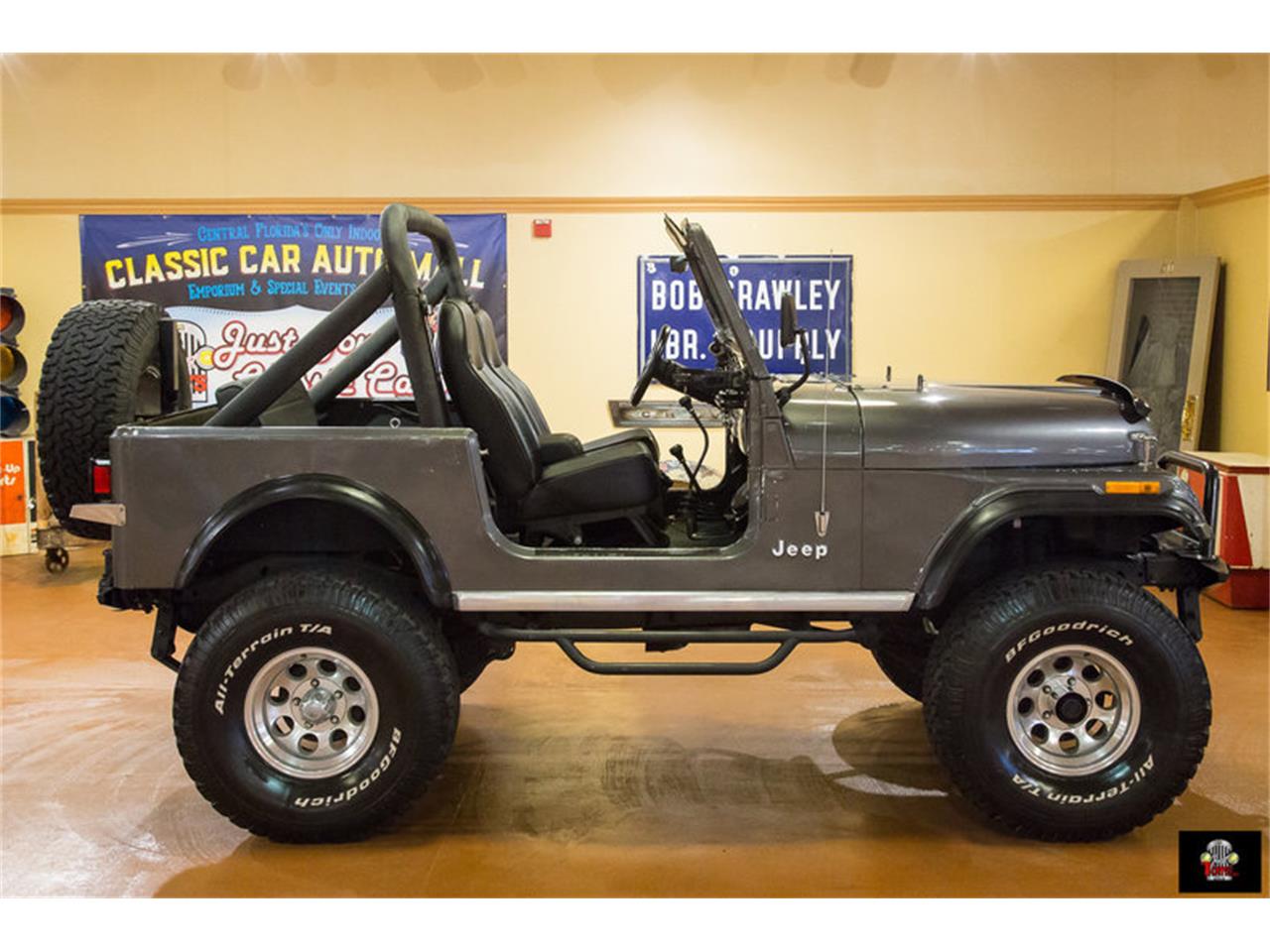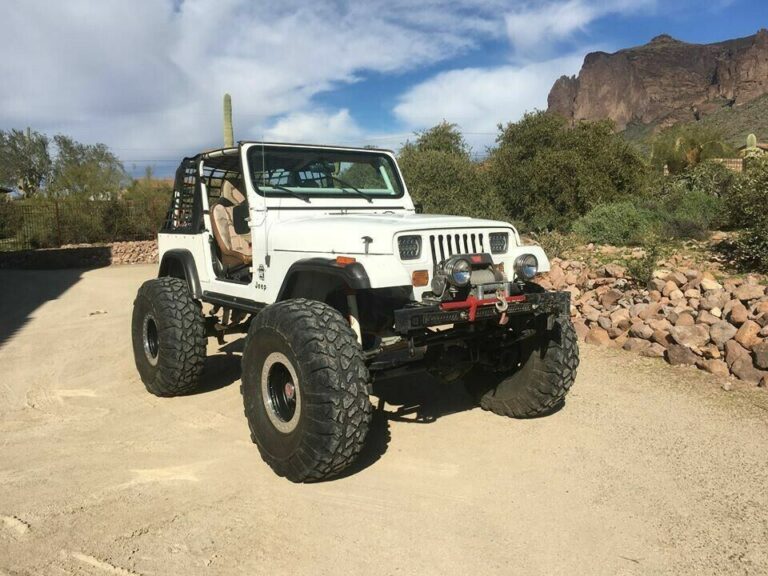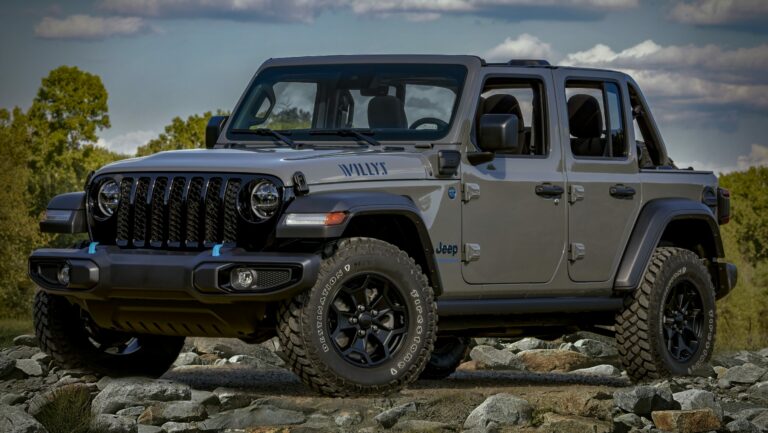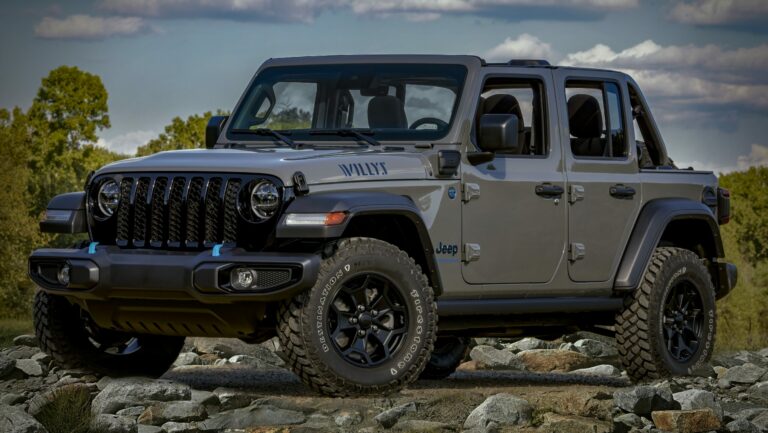86 Jeep CJ7 For Sale: Your Ultimate Guide to Owning a Legend
86 Jeep CJ7 For Sale: Your Ultimate Guide to Owning a Legend jeeps.truckstrend.com
The allure of a classic Jeep is undeniable, and among the pantheon of off-road icons, the 1986 Jeep CJ7 stands as a particularly significant and sought-after model. Representing the final year of the beloved CJ (Civilian Jeep) series before the introduction of the Wrangler, the ’86 CJ7 embodies a unique blend of rugged simplicity, timeless design, and a rich legacy of adventure. For enthusiasts, collectors, and those yearning for an authentic open-air driving experience, an "86 Jeep CJ7 For Sale" isn’t just a transaction; it’s an opportunity to acquire a piece of automotive history, a blank canvas for customization, and a key to unlocking countless off-road escapades.
This comprehensive guide is designed to navigate the exciting journey of finding, evaluating, and purchasing an 86 Jeep CJ7. We’ll delve into what makes this specific model so special, what critical factors to consider during your search, how to assess its true value, and practical advice to ensure a successful acquisition.
86 Jeep CJ7 For Sale: Your Ultimate Guide to Owning a Legend
Why the 1986 Jeep CJ7 Stands Out
The 1986 CJ7 holds a special place in the hearts of Jeep aficionados for several compelling reasons:
- The End of an Era: As the final production year for the CJ7, the ’86 model represents the culmination of decades of development for the original civilian Jeep. It carries the torch of its military heritage, offering a no-nonsense, go-anywhere capability that defined the brand.
- Classic Styling: The iconic round headlights, slotted grille, and minimalist body lines are instantly recognizable and deeply ingrained in automotive culture. Unlike its successor, the YJ Wrangler with its square headlights, the CJ7 retains that quintessential Jeep look.
- Robust Drivetrain: Most 1986 CJ7s were equipped with solid axles (Dana 30 front, AMC 20 rear), durable leaf spring suspension, and the legendary Dana 300 transfer case. These components provide excellent articulation and strength for off-road challenges, making them highly desirable for enthusiasts who value capability and reliability.
- Simplicity and Serviceability: CJ7s are known for their relatively simple mechanicals. This makes them more accessible for DIY repairs and modifications, fostering a strong community of owners who enjoy working on their vehicles.
- Customization Potential: The aftermarket support for CJ7s is immense. From lift kits and larger tires to engine swaps and interior upgrades, an ’86 CJ7 offers endless possibilities for personalization, allowing owners to tailor the vehicle precisely to their needs and tastes.
- Nostalgia and Investment: For many, the CJ7 evokes memories of simpler times, open roads, and adventurous weekends. As classic vehicle values continue to appreciate, a well-maintained or restored ’86 CJ7 can also be a sound investment.

What to Look for When Buying an 86 CJ7
Acquiring an 86 CJ7 requires a keen eye and a thorough inspection, as these vehicles are over three decades old and have often led tough lives. Here are the critical areas to scrutinize:
1. Rust: The CJ7’s Arch-Nemesis

Rust is the primary enemy of any vintage Jeep, and the CJ7 is particularly susceptible. Inspect these areas meticulously:
- Frame: Pay close attention to the frame rails, especially around the steering box mount, spring hangers, skid plate mounts (transmission/transfer case), and body mounts. Look for cracks, patches, or significant pitting.
- Body: Check the floorboards (especially under the pedals and seats), rocker panels, wheel wells, tailgate, and the area around the windshield frame. Rust in these areas can be extensive and costly to repair.
- Undercarriage: Examine fuel lines, brake lines, and exhaust components for excessive corrosion.

2. Drivetrain Components
- Engine: The 1986 CJ7 typically came with the 4.2L (258 cubic inch) AMC inline-six, known for its torque and reliability, or less commonly, the 2.5L (150 cubic inch) I4. Some may have aftermarket V8 swaps. Look for leaks (oil, coolant), unusual noises (knocking, ticking), smoke from the exhaust, and proper idle. Ask about maintenance history.
- Transmission: Manual options included the T-4 or T-5 (4 or 5-speed). The automatic was typically the Torqueflite 999. Check for smooth shifting, no grinding, and proper clutch engagement (manual).
- Transfer Case (Dana 300): Ensure 4WD engages smoothly and quietly in both high and low ranges. Check for fluid leaks.
- Axles (Dana 30 front, AMC 20 rear): Look for fluid leaks around the differential covers and axle seals. Check for excessive play in universal joints and wheel bearings.
3. Suspension and Steering
- Leaf Springs: Check for sag, broken leaves, or excessive rust. Worn bushings can lead to a loose feeling.
- Shocks: Look for leaks or damage.
- Steering: Excessive play in the steering wheel could indicate worn tie rod ends, ball joints, a failing steering box, or worn steering column components.
4. Brakes
- Check the brake lines for corrosion, the calipers/wheel cylinders for leaks, and the master cylinder for proper fluid levels and leaks. Test the brakes thoroughly during a test drive – they should be firm and stop the vehicle effectively.
5. Electrical System
Older Jeeps can have quirky electrical systems. Test all lights (headlights, tail lights, turn signals), gauges, wipers, horn, and the heater/AC (if equipped). Look for signs of amateur wiring jobs.
6. Interior and Exterior Condition
- Interior: Assess the condition of seats, dashboard, gauges, and floor coverings. While minor wear is expected, significant damage can indicate neglect.
- Top and Doors: If equipped with a soft top, check for rips, tears, and clear window visibility. For hardtops, inspect for cracks or missing hardware. Doors should open and close properly.
7. Documentation
Always ask for a clear title and, if available, any maintenance records. These can provide valuable insight into the vehicle’s history and care.
Understanding the Value: Pricing an 86 CJ7
The price of an 86 Jeep CJ7 can vary wildly based on its condition, originality, modifications, and location. Here’s a general breakdown:
- Condition is King: A fully restored, rust-free ’86 CJ7 in pristine condition will command a premium, often in the range of classic collector vehicles. A solid "driver quality" Jeep that is mechanically sound but shows some wear will be more affordable. A project vehicle, requiring significant work, will be the least expensive but demands the most investment of time and money.
- Originality vs. Modifications: While originality often fetches higher prices for classic cars, tasteful and well-executed modifications (like a desirable engine swap or a quality lift kit) can sometimes increase a CJ7’s value, especially if they enhance its off-road capability without compromising its character. Poorly done modifications, however, can detract from the value.
- Engine/Transmission Combo: The desirable 4.2L I6 and a manual transmission tend to be more sought after.
- Market Demand: Prices can fluctuate based on regional demand and the overall classic car market.
Price Table: 86 Jeep CJ7 For Sale
| Condition Category | Description | Estimated Price Range (USD) | Key Considerations |
|---|---|---|---|
| Excellent/Restored | Nearing concourse quality, professional restoration, minimal to no rust, all systems fully functional, often with desirable upgrades. Show-ready. | $25,000 – $45,000+ | Investment-grade, often turn-key, minimal immediate work needed. Verification of restoration quality is crucial. |
| Good/Driver Quality | Solid, reliable runner. Minimal surface rust, mechanically sound, presentable exterior/interior with some wear. Suitable for regular driving and light off-roading. | $15,000 – $25,000 | Good balance of enjoyment and value. May require minor cosmetic fixes or routine maintenance. Rust prevention is key. |
| Fair/Project Vehicle | Runs and drives but needs significant work. Moderate to severe rust, mechanical issues, rough interior/exterior. Requires substantial time and financial investment. | $5,000 – $15,000 | Best for experienced DIYers or those with a dedicated budget for professional restoration. Inspect thoroughly for structural integrity before buying. |
| Parts Vehicle | Non-running, heavily damaged, or rusted beyond reasonable repair. Purchased solely for components. | $1,000 – $5,000 | Only for those seeking specific parts. Not a viable project for driving. |
Note: These prices are estimates and can vary based on location, specific features, and market conditions.
Tips for a Successful Purchase
- Set a Realistic Budget: Beyond the purchase price, factor in potential costs for immediate repairs, upgrades, registration, and insurance.
- Inspect Thoroughly (and Bring Help): If you’re not mechanically inclined, bring a trusted mechanic or a knowledgeable friend who understands vintage Jeeps. A pre-purchase inspection by a professional is highly recommended.
- Test Drive Extensively: Drive it on various road types if possible. Listen for unusual noises, feel for vibrations, and test all functions (brakes, steering, 4WD).
- Ask Probing Questions: Why is the owner selling? What work has been done recently? Are there any known issues? How often is it driven?
- Research the Seller: If buying from a private party, a brief online search or checking their social media can sometimes provide insights.
- Be Patient: The right CJ7 will come along. Don’t rush into a purchase.
- Negotiate: Don’t be afraid to make an offer, especially if you’ve identified areas requiring repair.
Potential Challenges and Solutions
- Rust: This is the biggest hurdle. Solutions range from localized patch repairs to full frame-off restorations involving new body tubs and frame sections.
- Parts Availability: While original parts can be scarce, the aftermarket is robust for CJ7s, offering everything from reproduction body panels to upgraded drivetrain components.
- Fuel System Issues: Older carburetors can be finicky. Many owners opt for aftermarket fuel injection (e.g., Howell TBI, Holley Sniper) for improved reliability and performance.
- Steering Wander: Common in older Jeeps, this can often be remedied by replacing worn steering components, ensuring proper alignment, and sometimes upgrading the steering box.
- Safety Features: Remember that an ’86 CJ7 lacks modern safety features like airbags, ABS, and advanced crumple zones. Drive accordingly.
Conclusion
The 1986 Jeep CJ7 stands as a powerful symbol of freedom, adventure, and a bygone era of automotive simplicity. For those embarking on the search for an "86 Jeep CJ7 For Sale," it’s more than just buying a vehicle; it’s investing in a lifestyle and a tangible piece of American automotive heritage. By understanding what makes this model unique, knowing precisely what to inspect, and approaching the purchase with diligence and patience, you can secure a classic that will provide countless miles of open-air enjoyment and off-road excitement. Embrace the journey, and soon you could be behind the wheel of your very own legend.
Frequently Asked Questions (FAQ)
Q1: Is the 1986 CJ7 the last of the CJ series?
A1: Yes, 1986 was the final production year for the Jeep CJ7 before it was replaced by the Wrangler YJ in 1987.
Q2: What are the most common rust spots on an 86 CJ7?
A2: The most common and critical rust spots are the frame (especially around the steering box and skid plate mounts), floorboards, rocker panels, and the area around the windshield frame.
Q3: Are parts hard to find for an 86 CJ7?
A3: No, parts are generally not hard to find. Due to the CJ7’s enduring popularity, there is extensive aftermarket support, and many reproduction parts are available.
Q4: What’s a good engine for an 86 CJ7?
A4: The original 4.2L (258ci) AMC inline-six is highly regarded for its torque and reliability. Many owners also perform V8 engine swaps (e.g., Chevy 350) for increased power.
Q5: Can an 86 CJ7 be a daily driver?
A5: It can be, but with caveats. CJ7s lack modern comfort, fuel economy, and safety features. They require more frequent maintenance than newer vehicles. Many owners find them more suitable as weekend vehicles or dedicated off-roaders.
Q6: What’s the main difference between a CJ7 and a Wrangler YJ?
A6: The most visually obvious difference is the headlights: CJ7s have round headlights, while YJs have square headlights. Beyond that, the YJ featured a wider frame, slightly different suspension geometry, and a more modernized interior, among other changes.




